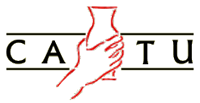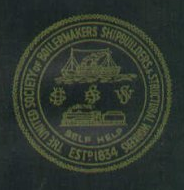Related Research Articles
In British politics, an affiliated trade union is one that is linked to the Labour Party. The party was created by the trade unions and socialist societies in 1900 as the Labour Representation Committee and the unions have retained close institutional links with it.

The Associated Society of Locomotive Engineers and Firemen (ASLEF) is a British trade union representing train drivers. It is part of the International Transport Workers' Federation and the European Transport Workers' Federation. At the end of 2018 ASLEF had 22,424 members. Its current General Secretary is Mick Whelan.

The National Graphical Association (NGA) was a trade union representing typographers and related workers in the United Kingdom.

The Ceramic and Allied Trades Union (CATU) was a trade union representing pottery workers in the United Kingdom.
The Workers' Union was a general union based in the United Kingdom, but with some branches in other countries. During the 1910s, it was the largest general union in the UK, but it entered a rapid decline in the 1920s, and eventually became part of the Transport and General Workers' Union (TGWU).

George Davy Kelley was a British trades unionist and Labour politician.
The National Union of General Workers (NUGW) was an early general union in the United Kingdom, the most important general union of its era.

The Amalgamated Society of Boilermakers, Shipwrights, Blacksmiths and Structural Workers (ASB) was a trade union in the United Kingdom. Many of its members worked in shipbuilding, in which industry it was the leading trade union, while over time it also developed strength in engineering and construction.

The Amalgamated Weavers' Association, often known as the Weavers' Amalgamation, was a trade union in the United Kingdom. Initially, it operated in competition with the North East Lancashire Amalgamated Weavers' Association in part of its area, and it was therefore nicknamed the Second Amalgamation.
The Amalgamated Society of Engineers (ASE) was a major British trade union, representing factory workers and mechanics.
The National Amalgamated Union of Shop Assistants, Warehousemen and Clerks was a trade union representing retail workers in the United Kingdom.

The Manchester Trades Union Council brings together trade union branches in Manchester in England.

The Electrical Trades Union (ETU) was a trade union representing electricians in the United Kingdom, much of its membership consisting of wiring fitters and telephone engineers.

The Amalgamated Society of Dyers, Finishers and Kindred Trades was a trade union representing dyers and workers in related jobs in the United Kingdom.
The Amalgamated Society of Operative Lace Makers and Auxiliary Workers, also known as the Lace Makers' Society, was a trade union representing laceworkers in England.

The Printing and Kindred Trades Federation (P&KTF) was a trade union federation in the United Kingdom.
The Ironfounding Workers' Association was a trade union representing foundry workers in the United Kingdom, principally in Scotland.
The Blackburn and District Weavers' Winders' and Warpers' Association was a trade union representing cotton industry workers in Blackburn, Lancashire, in England. One of the earliest weavers' unions to endure, it formed a model that many others copied, and was at the centre of early attempts to form a regional federation of cotton trade unions.
The Hyde and District Weavers', Winders', Warpers' and Doublers' Association was a trade union representing workers in the cotton industry around Hyde, then in Cheshire and Derbyshire in England.
The United Society of Engravers was a trade union representing engravers, principally in the cotton industry, but also in the paper printing industry, in the United Kingdom.
References
- 1 2 3 Marsh, Arthur; Smethurst, John B. (2006). Historical Directory of Trade Unions. 5. Aldershot: Ashgate Publishing. pp. 18–19, 29. ISBN 085967990X.
- ↑ Frank Bealey and Henry Pelling, Labour and Politics, 1900-1906, pp.290-292